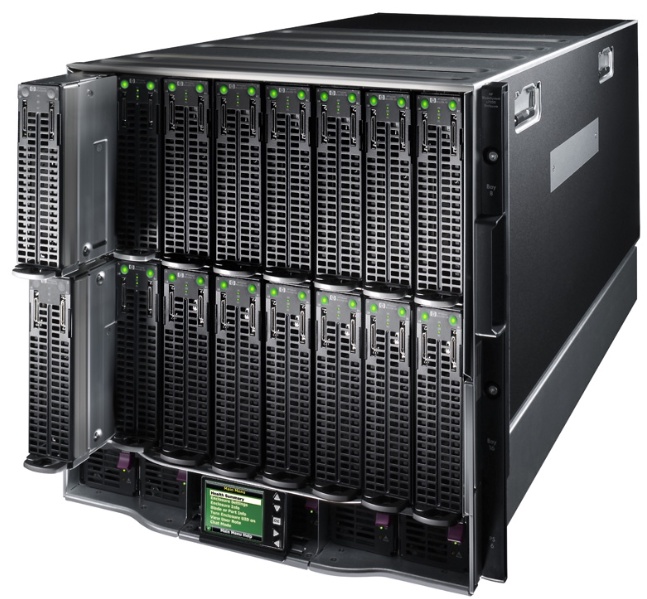Managing operational risk by protecting valuable data has become a need in today's enterprise IT environments. In addition to complying with regulatory mandates and meeting industry standards to ensure data confidentiality, organizations must protect their data from potential breaches by strengthening their data centre infrastructure with appropriate resources. And blade servers are one among them.
Blade servers are high-speed and modular server architecture, proven to be the most reliable hardware device to secure data assets. These servers have various built-in security features to protect sensitive data and improve overall system security. Let's look at how blade servers help protect your critical data with their potent security features.
- Provides Hardware-Based Encryption: Data centres store some of the most sensitive data, and a vast number of applications reside in the servers. As a result, they are prone to numerous cyberattacks and thefts. If you examine the blade servers, they come equipped with hardware-based encryption capabilities that secure stored and in-transit data. This encryption provides a strong layer of protection and prevents unauthorized access to data on the server's storage devices. Also, it ensures that even if someone somehow gains physical access, the data remains encrypted until they have the decryption keys.
- Secure Boot: It's a fundamental security feature of blade servers that doesn't require any special hardware. It can be easily implemented in BIOS. Secure Boot ensures that each complement is digitally signed when launched and the signature can only be validated against a set of rules outlined in UEFI BIOS. This ensures that py trusted and authenticated software components and firmware run during the server's boot process. Doing so helps prevent unauthorized or malicious code from being executed during the boot process thus reducing the possibility of firmware level attack and maintaining the server's integrity.
- Trusted Platform Module (TPM): Many blade servers come equipped with a TPM. It's a hardware component designed to provide hardware-based security functions. On the other hand, a TPM chip is a secure cryptoprocessor that has cryptographic capabilities. Since hardware tampering can expose the encryption keys, the blade servers use TPM as a repository to store keys, passwords and digital certificates. Since it's a hardware device, it is immune to malware and cyber-attacks. As a result, it helps safeguard servers against tampering, unauthorized access, and data breaches.
- Remote Management and Authentication: When servers are operated remotely, authentication and authorization methods are the key to securing data and preventing unwanted access. While authentication is the method to restrict access to limited users, authorization limits the users to perform operations remotely. Blade servers often come integrated with remote management tools, such as Integrated Lights-Out (iLO) and Intelligent Platform Management Interface (IPMI), that allow admins to manage and monitor the server remotely. These tools employ strong authentication and encryption protocols and secure communication between admins and the server, thus preventing the risk of unwanted access.
- Provides Physical Security: It means securing hardware, software, networks and data from physical actions and events that can cause severe loss or damage to an enterprise. Physical security involves access control, surveillance and testing of preventive measures against fire, flood, burglary etc., to reduce the loss of money and time because of these events and maintain maximum uptime.
Blade servers essentially provide physical access control. A typical blade server is housed in a dedicated enclosure (or a blade chassis), designed with various security features like locking mechanisms, access controls, etc. All this helps protect servers and components from physical access while offering protection against hardware-level attacks.
- Takes Advantage of Virtualization Technology: Virtualization doesn't directly contribute to security, but it's a great tool to ensure the same. And that's exactly what blade servers do with Virtualization, by creating, securing and isolating virtual machines (VMs) on a single physical server. Doing so allows for the segmentation of workloads and applications and helps you reduce the chances of hackers' lateral movement to cause a security breach.
- Redundancy and Fault Tolerance Capabilities: This isn't a direct security feature. But since blade servers boast a redundant and fault-tolerant design, they indirectly contribute to security and ensure high availability. Redundant components, such as power supplies and network connections, are great resources to keep a system running at all times, even when hardware failures or attacks occur.
- Vendor-Specific Security Features: If you search the market for blade servers, you will find a variety of models offered by different vendors. Hence, the security features may differ from one model to another. You may also get additional security features according to your specific hardware and software environment.
Conclusion:
While blade servers offer a range of built in security features and solid foundation to protecting data, you need to look at the bigger picture and implement holistic security measures such as regular updates, proper configuration, access controls, network security, and adherence to best practices for cybersecurity.


No comments yet